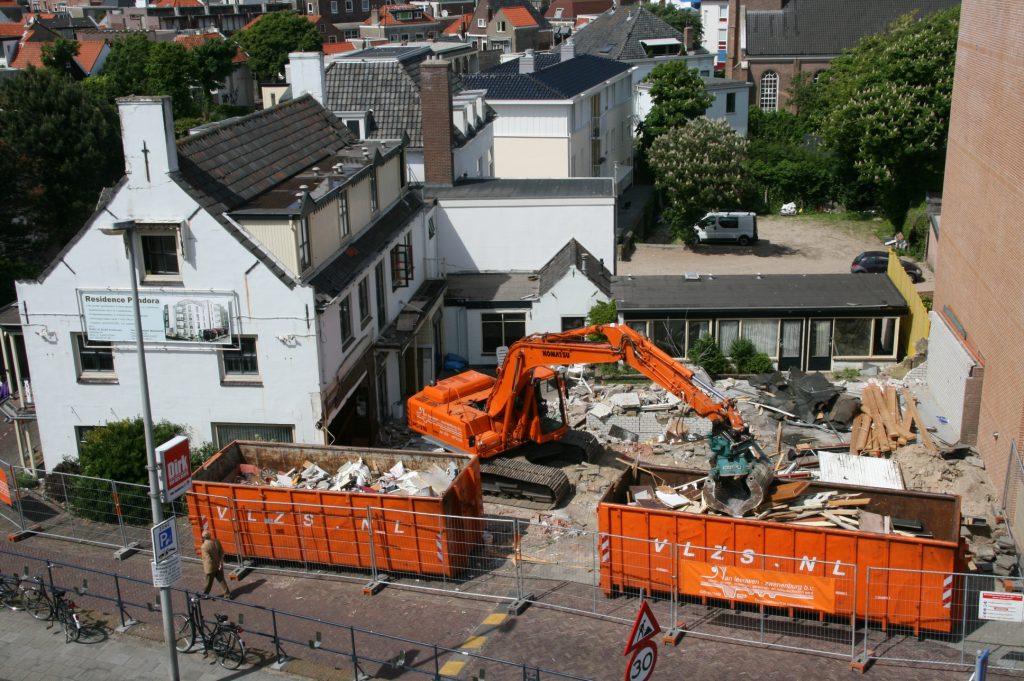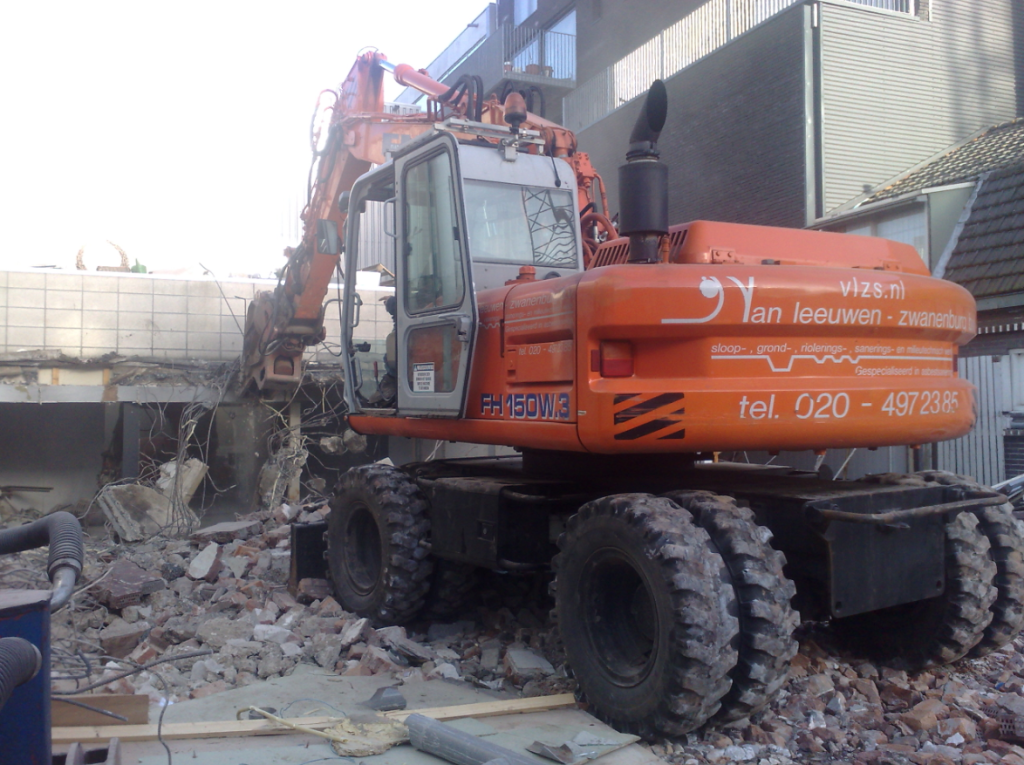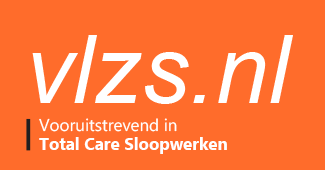CO2 footprint
Sustainability in Van Leeuwen Zwanenburg's business operations, annual report 2023
Van Leeuwen Zwanenburg has three operating companies under a holding company M. van Leeuwen Beheer, where energy management contributes to making the company's operations more sustainable, namely:
Van Leeuwen Zwanenburg Sloopwerken B.V.
Van Leeuwen Zwanenburg Demolition work
VLZS Airportservices B.V.
Sustainability in the operations of VLZS
Renovation demolition requires being able to work on the square metre. It is also mainly indoors. This led to the consideration of an electrically powered mini-excavator as early as 2006, in collaboration with a mechanical engineer. Preventing workers' exposure, to DME, Diesel engine emission was the original reason for going for electrification, Occupational health reasons in other words.
Apart from this transition for the sake of working conditions, there has been another transition and that has been the move away from diesel-powered compressed air compressors to drive pneumatic demolition hammers, which were replaced by electrically-powered ones from 2017 and perhaps the most radical transition has been the replacement of the many 1,000-watt halogen construction lamps with 60-watt LED from 2018. Halogen lighting is pleasant in winter, but the heat loss, also relative to light output is a positive Working Conditions aspect of the transition. A reduction on power consumption of about 90% and a lesser load on the client's construction power grid increases the reliability of the construction power supply.

Win win win
Reduction of diesel combustion and hence reduction in employee exposure is a win-win situation. That this had an added benefit on energy consumption was not in the picture at that time because the required power had to be provided by diesel-driven generators. Until then, there was an intuitive approach by the entrepreneur to electrification, which led to awareness that electrification was not only done because of working conditions, but that it also had positive effects on energy consumption. As an entrepreneur, if you then want to implement that consistently in your operations, you have to take a systematic approach.
Energy management
Energy management is then, after Quality, Health, Safety and Environmental Management, the logical extension of the already existing structure of the Business Management System. It lends itself well to integration and cost awareness.
In addition to the ISO 9001, VCA, Ascert standard for asbestos removal, the SVMS 007 for demolition and the SIKB for soil remediation, the CO2 Performance Ladder certificate a logical addition to this series.
The 2021 Footprint is also the reference year:
Based on the energy inventory, the following footprint was established. The improvement plan is based on 2020 as the reference year. VLZS believes that outsourced transport should also be included in its footprint, meaning that there is a difference between this representation and the SKAO interpretation.
Conclusion 2023 annual report:
Relative to 10%'s 2025 reduction target under the 2020 footprint was achieved in 2022, mainly due to the replacement of fluorescent lighting in the office and canteen with LED. This trend continued in 2023.
The most important battle struck in 2022 was the full penetration of LED lighting in the office area of the building on Venenweg, which achieved a reduction of about 30 per cent in electricity consumption. Which was immediately cashed in the return of a significant amount of money.
The footprint was verified by the Certification Body at level 3.
The 2020-2025 energy reduction plan
Reduction opportunities can be derived from the energy inventory; these reduction opportunities can be described qualitatively and determined quantitatively. The following actions, among others, are planned for the reduction target over the next five years.
Action point 2024, start measuring the procurement of outsourced transport against the reduction targets of the carriers.
Participation
Achieving the strategic objectives requires participation in knowledge networks and industry initiatives, sharing knowledge gets us all further.
We are a member of VERAS, this industry association has a "Sector Initiative CO2 Performance Ladder".
The individual targets will partly be emphasised in the vocational training and focus on increasing awareness that energy savings can already be found in small details. The quantification of reduction will become more precise over time by collecting data from different sources.
Initiatives
Replacement of the equipment stock was initiated in 2017 with BAT, electrically powered and Battery-powered construction equipment. With 2020 as the reference year, the van stock remains for renewal.
In doing so, Van Leeuwen Sloopwerken Zwanenburg sees an opportunity to deploy all-electric buses on some of its permanent maintenance contracts.
In the replacement of lease cars, the infasement of hybrid and electric passenger cars has now started, these initiatives will certainly lead to further reductions than those included in the Energy Reduction Plan 2020-2025.
Corona
Two years of Corona and then an energy crisis did not deter VLZS from pursuing the transition it had embarked on, albeit a situation of "special management" for two years.
Communications
Van Leeuwen Zwanenbrug Sloopwerken communicates its policies and objectives and initiatives to its stakeholders at least in the manner set out below.
Additional information or details can be found on the website of www.skao.nl or our landing page.

Need information or advice?
At VLZS, we think of everything: clear prices, efficient planning and no surprises. Feel free to get in touch!

